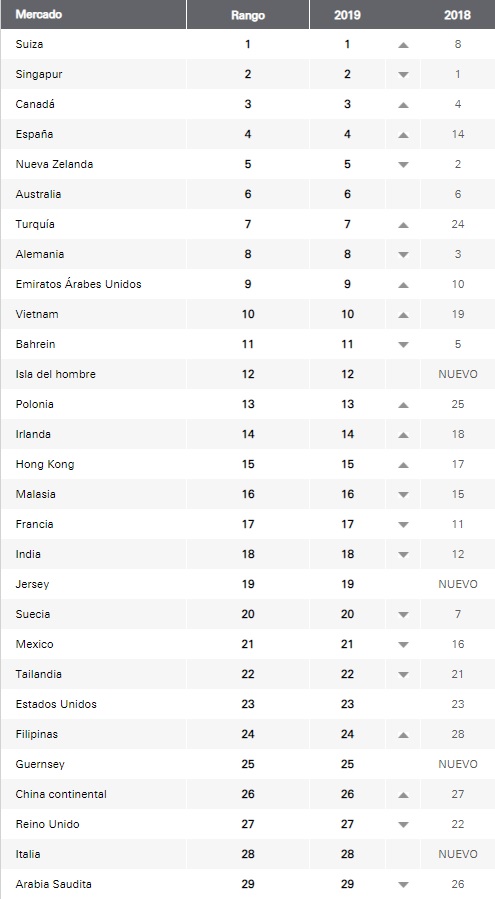From The Sovereign Man
Ten Reasons why Mexico could be a power move for you in 2021...
Around the world, and in the US, in particular, most people are feeling deeply frustrated by the inability to move around freely – and that is apart from the assault on their other freedoms. Getting a second residency outside your country is a powerful tool for overcoming Covid’s travel challenges – and for Americans, there’s an easy solution right on their doorstep…
Mexico is one of the most underrated second home destinations in the world. At Sovereign Man, we’ve done the boots-on-the-ground research, and we’re quite bullish about the country.
Out of all the countries our team has been to in these challenging times, Mexico has been one of the stand-out destinations in terms of reasonable COVID-19 regulations and its overall sense of pre-pandemic normalcy.
A few months ago, we even hosted a highly successful and well attended Sovereign Man: Total Access event in Cancun.
In fact, one of our own team members and his family escaped the stifling lockdowns in Chile to go ride out the pandemic in Playa del Carmen, which in comparison with Santiago was massively relaxed and largely mandate-free.
Why Mexico could be right for you…
Here are the ten of the top reasons we believe Mexico could be the right Plan B destination for sovereign-minded folk like you:
1. LOCATION AND EASE OF ACCESS: Apart from Mexico being situated close to many American cities, getting in and out of the country also proved to be a breeze during the pandemic. Even during the apex of 2020’s lockdowns, there were still plenty of non-stop flights between Mexico and cities like Houston, Paris, Miami, New York, Madrid, Los Angeles and Amsterdam.
2. ULTRA LOW COST OF LIVING: Mexico was super cheap even before COVID-19. But since the pandemic struck, the cost of living has become even more affordable. Our team member reports spending only $800 per month on rent for an upmarket, fully furnished two-bedroom condo in Playa, with a delicious brunch in the trendy town of Tulum costing as little as $7.50.
Even at the best restaurants in Merida, located three hours from Playa, you’d be hard-pressed to spend more than $10 on breakfast.
3. CULTURAL FAMILIARITY: Many Americans regularly vacation in Mexico, so taking an extended “pandemic break” there will not come with any cultural shocks. English is widely spoken, and if you speak a bit of Spanish, even better.
4. WORLD-CLASS TRAVEL DESTINATION: The spectacular state of Yucatan is home to the Riviera Maya, a 100-mile-long corridor that starts south of Cancun, includes Playa del Carmen, and ends in the town of Tulum. The Riviera Maya is famous for its all-inclusive beach resorts, a plethora of boutique hotels, and a great choice of restaurants for any taste and wallet.
5. EPIC LOCAL CUISINE: Mexico is world-renowned for its sumptuous cuisine. If you’re a foodie looking to dine out without the mask police giving you a hard time at every turn, then you’re going to love living in Mexico.
6. PERSONAL SAFETY: Many people hold the view that Mexico is stereotypically dangerous. And this can be the case in certain parts of Mexico. Yet, in many Mexican towns and cities, safety is simply not an issue. For example, the state of Yucatan -- home to the colonial city Merida -- has the same violent crime rate per capita as peaceful Wyoming. And Quintana Roo, where Playa del Carmen and Cancun are located, is only slightly more “dangerous”.
7. RECLAIM A SENSE OF NORMALCY: While America, Canada, the UK and most of Europe were subjected to insanely petty lockdown regulations, in Mexico, it was pretty much business as usual. So, if you’re done losing your mind while being forced to stay indoors at home, an extended beach break in Mexico could be just the thing you need.
8. VISA-FREE ACCESS: Americans, Canadians, Britons and EU nationals can enter Mexico without a visa and stay for up to 180 days, no questions asked. And as of April 15, there still aren’t any PCR testing requirements upon entry.
9. SIMPLE RESIDENCY APPLICATIONS: Want to stay longer than six months at a time? No problem. Temporary residency in Mexico is easy to acquire for anyone who can prove they have sufficient savings or income. You’ll need at least $2,000 per month after taxes, plus around $700 for each dependent. Alternatively, you can apply on the basis of savings -- $40,000 or so per person should be sufficient.
After holding temporary residency for four years, you can upgrade to permanent residency. That is a great asset that gives you another option to live and work (or escape) outside of your home country. And you can complete 95% of the application process without leaving your home.
10. PERMANENT RESIDENCY FOR RETIREES: Retirees have a shortcut to permanent residency in Mexico. As long as you can prove you are officially retired and have a pension or Social Security income of at least $3,500 per month, you can qualify for permanent residency immediately. Alternatively, you can replace it with around $100,000 in your bank account, or liquid investments. (And some consulates do not even require you to be retired at all.)
After five years of legal residency, you can apply for naturalization, which means becoming a Mexican citizen, and obtaining a Mexican passport.






